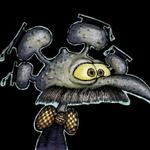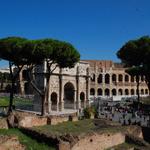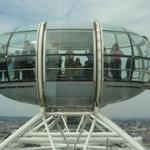Da mein Informant (xD) Bucchi mir 2 Links geschickt hat, mit Informationen, die einige hier interessieren könnten, poste ich sie einfach mal:
1. Es gibt von Sharravin bekanntermaßen keine Zeugenaussage, dafür diverse Interviews, z.B.
das hier. Dort heißt es u.a.:
- das Foto mit dem "verschütteten" Zelt wurde tatsächlich erst am 27.02. gemacht
- die beiden aufgerichteten Ski standen ursprünglich vor dem Zelt und wurden von Slobstov und Sharavin nicht angerührt; wer die Ski auf die Positionen, wie man sie auf dem Foto sieht, steckte, ist offenbar unbekannt
- Slobstov und Sharavin haben den Zelteingang nicht genutzt, weil ??? (hier verstehe ich Sharavins Antwort nicht *lol*)
- mit der Axt, die vor dem Zelteingang lag, wurde der Schnee auf dem Zelt entfernt
- Sharavin machte keine Zeugenaussage, weil zu der Zeit: Gehirnerschütterung -> Krankenhaus
- bis auf Slobstov würde niemand von der Suchmannschaft die Schneebretttheorie von Buyanov unterstützen
- Sharavins hat sich auf keine vollständige Theorie festgelegt, ich meine, herauszulesen, er vermutet irgendwas in Richtung Militär?? ("I did not formulate the full version of the tragic death of the group, but I assume that the group was in the test zone, was under light, poison and mechanical influence and left the tent in a hurry")
- vom Zeltplatz aus konnte man die große Zeder erkennen
- Sharavin vermutet, dass Doroshenko auf die Zeder geklettert ist, um Feuerholz abzubrechen, dabei sei er gestürzt
2. Ein äußerst interessanter
Artikel von Sergei Sogrin, Mitglied der Suchmannschaft, welcher sich explizit mit der Buyanov-Theorie auseinandersetzt. Er hält u.a. für einen Widerspruch, dass Buyanov einerseits behaupet, das Schneebrett sei vom Wind verweht worden, hätte aber andererseits ernorme Verletzungen bei der Gruppe verursacht[1]. Tatsächlich würden Spuren derartiger Schneebretter bis in den Sommer sichtbar bleiben[2]. Außerdem legt er dar, warum die "analogen Lawinenunfälle", die in dem Buch aufgeführt wurden, bzgl. Lawinengefahr gänzlich anders bewertet werden müssen[3]. Aus eigener Erfahrung am Dyatlov-Pass und in der Gegend, schließt er eine Lawinengefahr aus und hat in 50 Jahren von keiner Lawinenwarnung für/von Touristen gehört[4]. Der ganze Artikel ist imo absolut lesenswert, da der Autor mit viel praktischer Erfahrung aufwarten kann!
[1] "On the one hand, he argues that "with the fall of a small avalanche with a slow speed, there is no significant compaction of snow, so the wind erosion destroys such removal" (for this reason, in the opinion of Buyanov, the search engines saw nothing). And on the other hand, this snow was so dense ("snow board"), which not only crushed the tent, but also caused severe injuries. Where is the logic? And there are many such contradictions ..."
[2] "If there really was a layer of snow on the tent ("snow board"), then it would not be difficult to distinguish it from the rest of the snow. "Snow board" has a completely different structure and density. To destroy it with a hammer, you can not skip, you need an ax and a good steel shovel, and you will have to make a lot of efforts. In addition, the remnants of the "snowboard" lie down to the summer and melt with difficulty. Nothing like this was."
[3] "There are avalanches that can descend once in decades. And in the same place there can be places where there is never any avalanche, although according to the "Map of the Avalanche areas of the USSR", compiled under the guidance of G.K. Tushinsky, the whole area is considered to be an avalanche hazard and falls according to the classification to the first group: "A region with a significant avalanche danger: avalanches are encountered often, they go off annually." The circumpolar Urals on this map is also assigned to the first group. There avalanche accidents with groups of tourists took place, which Bujanov refers to in support of his version. But analogies can not be carried out, since the entire region of the Northern Urals is referred to the 4th group. We read: "Areas with a potential avalanche danger (now safe), i.e." avalanches are not fixed "(see" Following the traces of avalanches ", KS Losev, Hydrometizdat, 1983). Ibid read (p. 115): "On the map of the avalanche danger of the Soviet Union, compiled by avalanche workers, the places of potential avalanche danger are indicated. Now these areas are quite safe, as dense forests grow on the slopes of the mountains, but researchers warn - take care of the forest: if it is destroyed, there will be white death »."
[4] "From my own experience of visiting the Northern Urals in different years in the winter (and these are the areas of Konzhakovsky Stone and Serebryansky, from the Vizhay valley through the Ural range and Oikko-Chakur mountain to the Vishera basin, in the city of Otorten), not to mention the long stay in the search area, to me never had a chance to meet either with traces of an avalanche, or with signs of avalanche danger. In the 50 years numerous groups of tourists from Sverdlovsk laid their routes through the Northern Urals. And no one has ever warned of the avalanche danger of these routes."
Tajna schrieb:Baumwolle müsste aber auch atmungsaktiv sein, es sei denn, man hätte sie mit Wachs imprägniert.
Tajna schrieb:Weniger Kondenswasser bei modernen Zelten wird durch eine doppelte Hülle erreicht.
Tajna schrieb:Aber das dürfte mit der Ofenheizung bei dem alten Zelt auch kein Problem gewesen sein.












